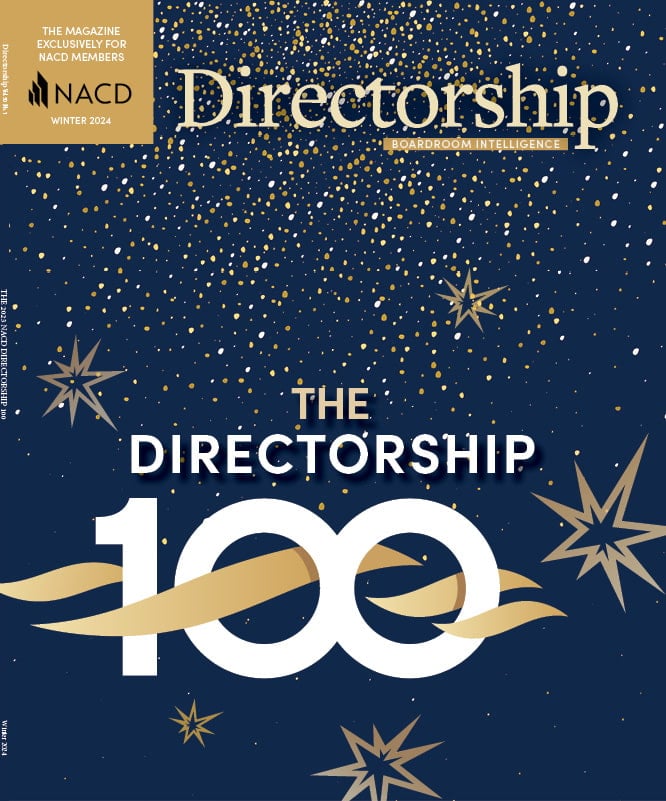While it’s been entertaining to watch longtime Disney CEO Robert Iger announce his retirement yet again, the challenge of replacing him is a stark illustration of the difficulties of succession planning. With the board recently extending his contract through 2026, Iger has said, “The importance of the succession process cannot be overstated, and as the board continues to evaluate a highly qualified slate of internal and external candidates, I remain intensely focused on a successful transition.” The odds are against them.
Although speed has been the guiding philosophy for years when filling executive positions, as soon as boards get wind that a CEO or other top executive is moving on, they go full throttle to move past what can be a reputationally and fiscally challenging period.
While this is a natural human reaction to an impending change, it’s not conducive to making solid or thoughtful placement decisions. And thoughtfulness is needed right now. Early 2023 (in the first 5 months of the year) saw an 18 percent increase from 2022 in CEO exits, according to Korn Ferry, and last May saw the highest monthly total of CEO exits ever recorded. Whether those departures were voluntary or forced, many of those companies were left scrambling for replacements. Indeed, research conducted by PwC in 2020 found that 17 percent of boards had no viable CEO candidates.
This isn’t to suggest speediness can’t play a role in succession planning. You can certainly fast-track parts of the process. However, there’s no sense in attempting to speed up the overall process once the exit happens. About 30 to 50 percent of executives don’t make it 18 months from their promotions, according to research by the Center for Creative Leadership as reported by Forbes in January 2024. The reason is that although they’re successors, they haven’t been set up for success.
So, how do you get it right? Start with the next generation of leaders.
Navigating the Challenges of Succession Planning
Ideally, every organization would have two or three successors for all high-level leadership positions. Though the CEO might have a hand in naming these candidates, when it comes to replacing themselves, they should prepare options and then step back and leave it to the board.
Many CEOs fall victim to similarity bias, a form of unconscious bias that leads them to surround themselves with people like them. In a 2014 article, “What Determines Demographic Similarity
Between Incumbent CEOs and Their Successors? A CEO Informal Power Perspective,” published in Managerial and Decision Economics, data revealed that while CEOs are not formally tasked with naming their successors, incumbents often use informal power to influence the selection of candidates they believe will carry on where they left off by mentoring and cultivating demographically similar people. While relying on this practice can be faster and appear easier for the board in the short run, it’s fraught with risk to the business in the long term.
Once potential successors are named, they need to be primed for their eventual positions. Regrettably, real preparation is rare. That’s why most professionals who assume executive roles admit they weren’t prepared for the job, including 68 percent of CEOs, according to a 2018 survey from executive search firm Egon Zehnder.
There’s an antidote to this, and it has nothing to do with speed. It has to do with setting succession plans in motion three, five, and sometimes ten years before a changing of the guard—something 56 percent of companies aren’t doing, according to an August 2021 survey by the Society for Human Resource Management of 580 of its members. Only 51 percent of directors said their company has a written plan for the current CEO's succession, according to 200 directors surveyed for the Gartner 2023 Board of Directors Talent Survey. In the same survey, 60 percent of board directors said they are very confident in their organization's ability to navigate CEO succession.
And succession planning starts with a strong link between the board chair and the current CEO to navigate the conversation around identifying a bench of top players who can become successors in the future. These candidates may or may not make it to the highest rungs of the ladder. Regardless, they still need to be identified—and with full engagement from human resources—developed and mentored.
Avoiding Crisis With Future-Forward Strategies
As you might imagine, this requires strong consideration of the dynamics, relationships, and politics involved. Even in best-case scenarios, the journey can be fraught with risk and frustration.
CEOs and C-suite executives frequently hold their career decisions close to the vest—much like Tesla chief financial officer Zach Kirkhorn, who stepped down unexpectedly in August after 13 years at the company, seems to have done. Executives are reluctant to share retirement plans, even in confidence, with the board chair. Why? It’s deeply personal, tied to identity, family dynamics, financial plans, deeply held relationships, and their view of what comes next. For even the most experienced board chairs, it’s an uncomfortable conversation to broach. This is even more challenging in a publicly traded company, where any plans for C-level departures must be formally announced, immediately risking impact on stock performance and setting into motion questions about succession.
Unfortunately, the longer an executive remains silent about their intentions, the higher the possibility that their would-be successors won’t hang around to wait for their big chance.
A CEO we counseled faced just this challenge. His executive team was stacked with near-retirement leaders, many of whom were holding their plans close and watching the stock price and their vesting schedules as they wagered when to depart. Meanwhile, the CEO and chief human resources officer struggled to prepare and retain ready successors in-house, creating new titles or roles to keep them from jumping ship.
This wait-and-see dynamic sets up what often feels like a “behind closed doors” process, disconnected from the time and energy needed to build a strong internal bench. Worse, it leads to a reactive replacement process where human resources is tasked with responding to “Who do we have who can fill that role?”
The costs are high for firms that avoid sound planning. Not only is market value impacted by poor succession, but departing executives also take intellectual capital with them, often triggering other departures and hindering efforts to outpace competitors through innovation. Good succession planning isn’t an HR strategy—it’s a business strategy.
What’s Wrong With ‘the Name in the Envelope’?
Historically, boards have been perfectly satisfied when management goes through a “name your successor” exercise every few years. Quite frankly, executives find the process arbitrary and time-consuming and spend as little time on it as possible. Let’s face it: Given the choice to visit a client or work on a high-profile deal, most will put “name my successor” fairly low on their to-do lists. To keep it fast and easy, HR relies on oversimplified frameworks to rank potential. Of course, this is where similarity bias kicks in.
Yet emergency succession happens. When crisis scenarios occur, every board and every company is accountable for knowing who will step in, how the transition will be managed, and what happens next. Often, an emergency successor acts as an interim solution while an outside search begins.
This type of replacement planning has a short-term horizon of at most a year. We often see this type of limited planning dressed up and presented as strategic work. It’s anything but. Strategy involves future-focused scenario planning with leadership profiles that will respond to market, culture, and talent demands the company will face now and in the future. Leadership skills like critical thinking and enterprise mind-sets must be developed, and successors need to forge board relationships and interact with analysts, clients, and partners to prepare to lead the company.
The point is that replacement planning might sound good on paper but isn’t intentional enough. Take the example of a public company CEO who announced his retirement at an analyst meeting, where he named his successor but didn’t count on another key senior leader walking out the door without anyone to fill their role. It became a scramble to find an external hire, which created distractions for the senior team. The best-laid plans to smoothly transition out became an all-hands-on-deck exercise for the outgoing CEO.
Building a three- to five-year plan creates an insurance policy to prevent unnecessary and very costly external searches. In most cases, the gold is buried right in the company’s backyard with star talent that hasn’t been noticed or cultivated.
Stay Away From Speed in Succession Planning
Boards can still value fast action in their companies in other areas, with one caveat: stay away from it in succession planning for a new CEO. Boards just can’t wait until the walls are tumbling down to create criteria for key executive roles or begin looking for people who might (or might not) have what it takes to be in the C-suite. Those definitions and the procedures to transition high performers from where they are now to where you need them tomorrow must be outlined well before companies ever face a succession moment. ■






